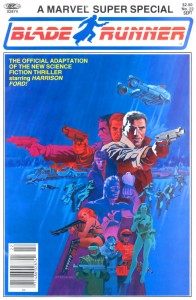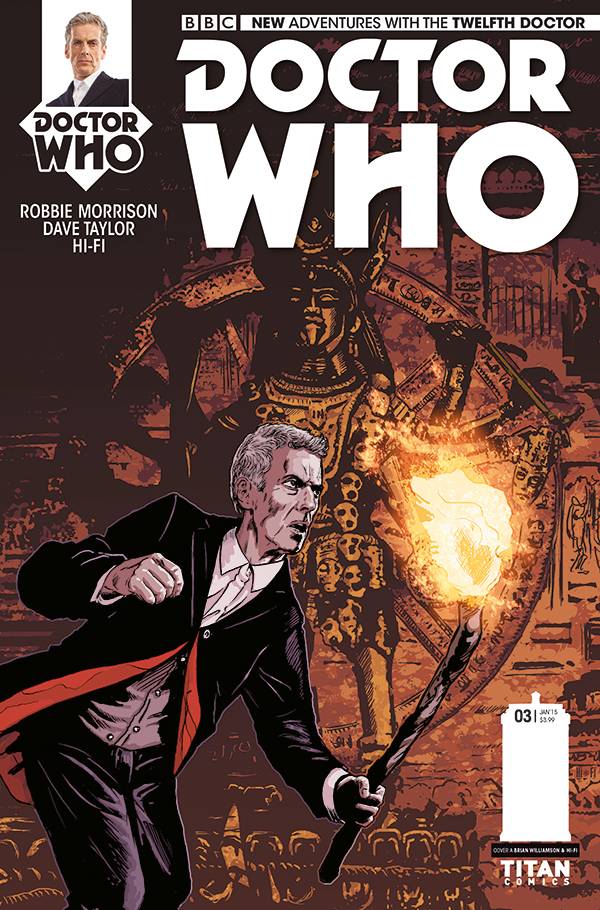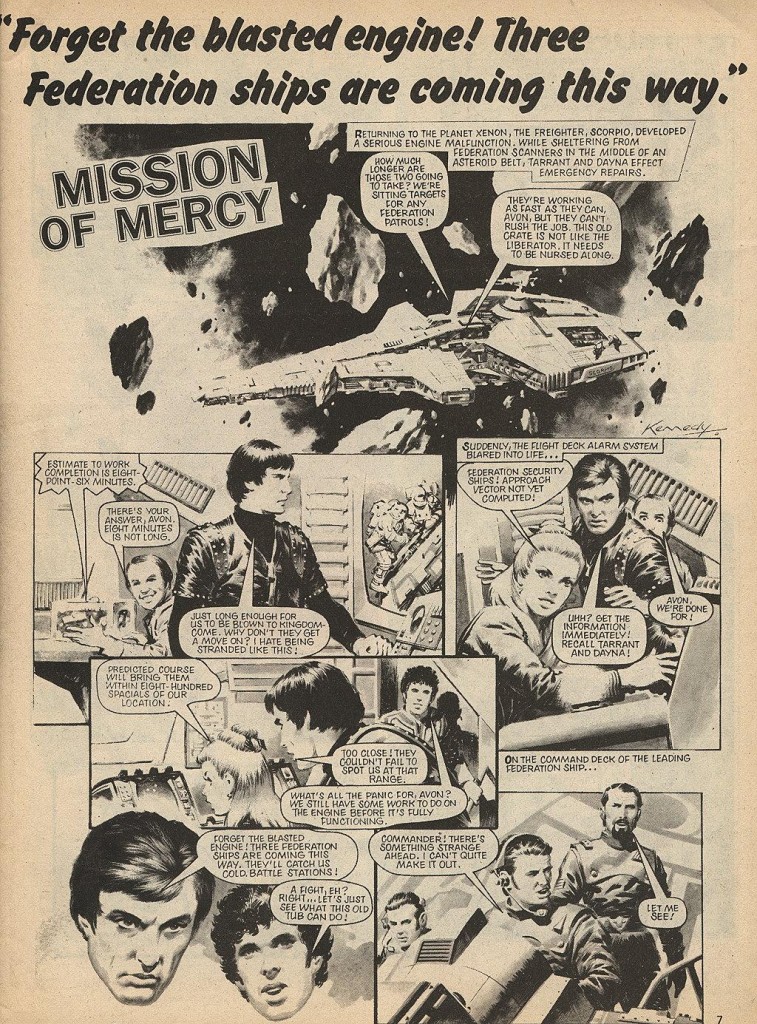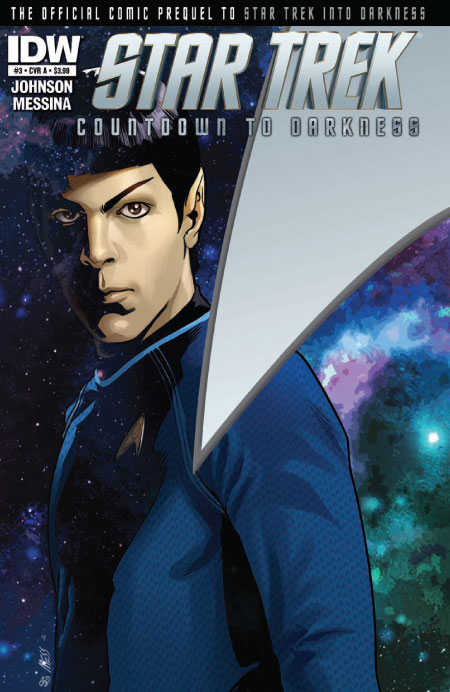The ultimate showdown between science fiction heroes The Doctor and Ellen Ripley – both also comic heroes – has seen British TV’s favourite Time Lord from Doctor Who emerge victorious in a British Film Institute poll we mentioned recently.
The BFI launched its poll to find the nation’s favourite SF character back in August as part of its major nationwide celebration of SF on screen, Days of Fear and Wonder, presented together with O2. Thousands of votes have been cast, and when it came to the final two, man vs. woman, TV vs. film, the Doctor pipped Ripley to the post by just 110 votes.
Ever since he stole a TARDIS and fled, the renegade Time Lord known only as ‘The Doctor’ has been thrilling TV audiences and teaching children across the globe about a new kind of heroism. A time-travelling space detective who never uses violence, the BBC’s flagship character has rightly become the longest-running sci-fi hero in history.
From a total of some 9000 votes, 38 per cent of characters originated in film, while 62 percent originated on TV. Heroes outweighed villains, with 82 per cent of our voters siding with a force for good, and the 1990s emerged as voters’ golden age for SF characters, with that decade boasting 28 per cent of all the characters voted for
The naming of the nation’s number one Sci-Fi character marks the end of the BFI’s Sci-Fi:Days of Fear and Wonder, a project that saw the largest collection of SF film and television ever presented in the UK, including the release of classic titles including 2001: A Space Odyssey into UK cinemas and on DVD and Blu-ray, over 50 classic and rarely seen films available online through BFI Player, and an extensive season of sci-fi film and events held at the BFI Southbank and over 200 venues across the UK.
The Doctor features in comics thanks to Doctor Who Magazine, Doctor Who Adventures and Titan Comics.
Dark Horse has previously published Aliens comics and Titan Books re-published the original Alien: The Illustrated Story drawn by Walt Simonson as both a gorgeous-looking original art edition, and a more modestly-priced softback edition back in 2012 (Read our review)
POLL STATISTICS
TV vs. Film
38% originated in Film
62% originated on TV
Decades
1920s 1%
1950s 3%
1960s 7%
1970s 16%
1980s 22%
1990s 28%
2000s 20%
2010s 3%
Gender
Female 33%
Male 60%
Other/non-specific 6%
Both 1% (The Master from Doctor Who latest regeneration has taken a female form)
Heroes vs. Villains
Heroes 82%
Villains 15%
Other/ambiguous 3%
Type
Alien 19%
Human 67%
Robot/Computer 14%
The Top 10 from 3-10 – and their comic strip incarnations
Number Three: Anakin Skywalker / Darth Vader (Star Wars)
There can be no more iconic depiction in the fall of man in all of cinema than the epic journey of young Jedi, Anakin Skywalker. Things started promisingly for the Force-sensitive human male, until a noxious combination of temptation and heartbreak sent him on a downward spiral to the Dark Side, and a reign of terror as the throaty Darth Vader in service to the Galactic Empire.
• Star Wars returns to comics in January with Marvel’s new title, which has generated over one million pre-orders. The publisher has also announced plans to reprint its original comic-book adaptations of Star Wars, The Empire Strikes Back and Return of the Jedi throughout 2015 in advance of the 18th December premiere of The Force Awakens, which unfolds after Return of the Jedi in the franchise’s continuity.
The new, reissued versions of the movie adaptations will be recoloured and released in hardcover collections, beginning with Star Wars: Episode IV – A New Hope in May 2015.
Number Four: Kerr Avon (Blake’s 7)
The BBC’s 1970s space opera was renowned for its bleakness and lack of sympathetic characters. But Paul Darrow’s performance as Avon, perhaps the most villainous of all the show’s renegades, nevertheless became the fans’ favourite. The show started off as an ensemble piece, but Avon quickly became the lead character.
• Blake’s 7 doesn’t currently have a comics incarnation – Marvel UK’s strips have never been collected – but the saga continues in new audio adventures. More info: http://blakes7.com
Number Five Captain Malcolm Reynolds (Firefly)
When it comes to cult television, actor Nathan Fillion is regarded as one of those people who has ‘been in everything’. But without doubt his most iconic role was Mal in Joss Whedon’s short-lived space western, Firefly, and its cinematic spin-off, Serenity. Whedon had wanted a hero who could be “everything that a hero was not,” and Fillion’s performance as a man with little moral purpose other than to keep his crew alive has been heralded as one of the most complex on TV.
• A number of comics have been set in the Firefly universe under the banner Serenity. More info: http://firefly.wikia.com/wiki/Category:Comics
Number Six: G’Kar (Babylon 5)
G’Kar started off being fuelled by bitterness and hatred, and died as something approaching a God. Throughout the space opera’s saga that explored big themes of war, peace, religion and sacrifice, his storyline was perhaps the biggest. While locked in a revenge battle, G’Kar took a drug that gave him telepathic abilities, but the side-effect made him Messianic. By the end he was a holy figure, and The Book of G’Kar a spiritual tract for the Narn.
• DC Comics published a number of Babylon 5 comics. Series artists included Mike Collins, David Roach and John Ridgway. More info: http://babylon5.wikia.com/wiki/Comic_Books
Number Seven: HAL 9000 (2001: A Space Odyssey)
A sentient computer whose physical form is never depicted might struggle to count as a ‘character’ in the strictest sense. But it’s a testament to Arthur C. Clarke and Stanley Kubrick’s vision that he/it/she endures. As the antagonist, the Heuristically programmed Algorithmic computer controls all the systems of the spacecraft Discovery One. What could possibly go wrong?
• Marvel Comics published a 2001: A Space Odyssey series in the 1970s drwn by the legendary Jack Kirby. Sequart has two features its web site, on the film adaptation and his bizarre continuation of the story, which Julian Darius describes as “nothing short of flabbergasting”.
• The British comic Countdown ran a series called “Countdown” utilising the space craft designs from 2001, drawn by John M. Burns, in the 1970s. It has never been collected.
There are more details of the 2001 comics here: http://en.wikipedia.org/wiki/2001:_A_Space_Odyssey_(comics)
Number Eight: Rick Deckard (Blade Runner)
Most actors would be happy with just one appearance in our Top Ten, but Harrison Ford makes it in twice. The first appearance is as Rick Deckard, a bounty hunter for the police in a dystopian San Francisco. Deckard starts out as a selfish, self-involved man with little consideration for the ‘Andys’ he is stalking. But the story’s emotional core plays out through Deckard, who encounters a deep empathy for all forms of life.
 • Marvel Comics published a stunning adaptation of Blade Runner as a Marvel Super Special comic (Issue 22), written by Archie Goodwin, penciled by Al Williamson and Carlos Garzon, and inked by Williamson, Dan Green, and Ralph Reese. It was reprinted as the Blade Runner Annual published by Grandreams in the UK.
• Marvel Comics published a stunning adaptation of Blade Runner as a Marvel Super Special comic (Issue 22), written by Archie Goodwin, penciled by Al Williamson and Carlos Garzon, and inked by Williamson, Dan Green, and Ralph Reese. It was reprinted as the Blade Runner Annual published by Grandreams in the UK.
Number Nine: Han Solo (Star Wars)
Harrison Ford’s second character to appear in the Top Ten is the roguish Captain of the Millennium Falcon. Originally indebted to Jabba the Hutt following the loss of valuable cargo, Han Solo was drawn further into the Jedi orbit, motivated (at first) by the reward for the safe return of Princess Leia. But there was nobility behind the bravado, and Han would go on to be an influential general in the Rebel Alliance.
Spock’s life is defined by conflict, the battle of logic against passion. His Vulcan-human heritage fuels that conflict and puts him at odds with his impulsive, often reckless Captain, James T. Kirk. But his steadfast loyalty to the man would always win out in the end, creating the genre’s most enduring bromance.
• IDW currently holds the license to publish Star Trek comics, featuring both the new and classic Trek universe
Web: www.bfi.org.uk/sci-fi Twitter: @BFI #BFISciFi
The founder of downthetubes, which he established in 1998. John works as a comics and magazine editor, writer, and on promotional work for the Lakes International Comic Art Festival. He is currently editor of Star Trek Explorer, published by Titan – his third tour of duty on the title originally titled Star Trek Magazine.
Working in British comics publishing since the 1980s, his credits include editor of titles such as Doctor Who Magazine, Babylon 5 Magazine, and more. He also edited the comics anthology STRIP Magazine and edited several audio comics for ROK Comics. He has also edited several comic collections, including volumes of “Charley’s War” and “Dan Dare”.
He’s the writer of “Pilgrim: Secrets and Lies” for B7 Comics; “Crucible”, a creator-owned project with 2000AD artist Smuzz; and “Death Duty” and “Skow Dogs” with Dave Hailwood.
Categories: British Comics, Doctor Who, Star Trek, Star Wars, US Comics






 Today’s Entertainment, Memorabilia & Movie Props at Ewbank’s offers Frank Hampson, Star Wars, Harry Potter rarities
Today’s Entertainment, Memorabilia & Movie Props at Ewbank’s offers Frank Hampson, Star Wars, Harry Potter rarities